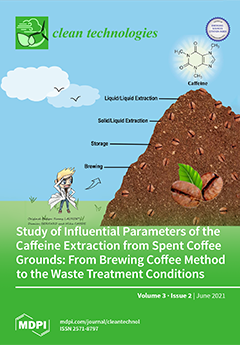Deep eutectic solvents (DES) are compounds of a hydrogen bond donor (HBD) and a hydrogen bond acceptor (HBA) that contain a depressed melting point compared to their individual constituents. DES have been studied for their use as carbon capture media and biogas upgrading. However, contaminants’ presence in biogas might affect the carbon capture by DES. In this study, conductor-like screening model for real solvents (COSMO-RS) was used to determine the effect of temperature, pressure, and selective contaminants on five DES’ namely, choline chloride-urea, choline chloride-ethylene glycol, tetra butyl ammonium chloride-ethylene glycol, tetra butyl ammonium bromide-decanoic acid, and tetra octyl ammonium chloride-decanoic acid. Impurities studied in this paper are hydrogen sulfide, ammonia, water, nitrogen, octamethyltrisiloxane, and decamethylcyclopentasiloxane. At infinite dilution, CO
2 solubility dependence upon temperature in each DES was examined by means of Henry’s Law constants. Next, the systems were modeled from infinite dilution to equilibrium using the modified Raoults’ Law, where CO
2 solubility dependence upon pressure was examined. Finally, solubility of CO
2 and CH
4 in the various DES were explored with the presence of varying mole percent of selective contaminants. Among the parameters studied, it was found that the HBD of the solvent is the most determinant factor for the effectiveness of CO
2 solubility. Other factors affecting the solubility are alkyl chain length of the HBA, the associated halogen, and the resulting polarity of the DES. It was also found that choline chloride-urea is the most selective to CO
2, but has the lowest CO
2 solubility, and is the most polar among other solvents. On the other hand, tetraoctylammonium chloride-decanoic acid is the least selective, has the highest maximum CO
2 solubility, is the least polar, and is the least affected by its environment.
Full article





